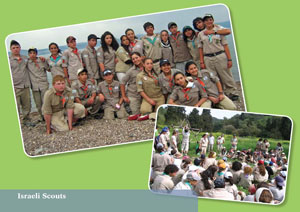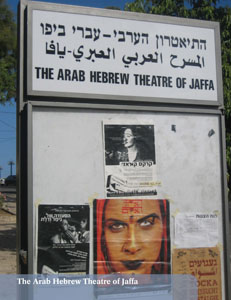- Home
- Play & Learn Home
- Online Enrichment
- Experience Modern Israel
- Israel It's Complicated
- Jewish and Me
- Jewish Holidays Jewish Values
- Jewish Values in Genesis and Jewish Values in Exodus
- Min Ha’aretz
- Our Place in the Universe
- Simply Seder
- The Prophets: Speaking Out for Justice
- Making T'filah Meaningful
- Make, Create, Celebrate
- Yom Haatzmaut Resources
- Hebrew Apps
- About The OLC
- What is the OLC?
- Introduction
- Get Started
- Resources
- OLC Content
- Parent Materials
- See My OLC Classes
- Store
12 EXCITING WAYS TO USE MODERN ISRAEL IN FOCUS MINI-POSTERS
By Wilhelmina Roepke
Modern Israel in Focus features thirty-two intriguing mini-posters of contemporary life in Israel. Printed on laminated jumbo letter card stock, each glorious full-color mini-poster will instantly capture students’ attention.
Below are twelve ways you can use Modern Israel in Focus mini-posters to stimulate classroom discussions about Israel and incorporate the posters in learning centers and cooperative learning exercises. Many of the ideas can be adapted for family programs. The posters are also a valuable resource for geography and map games, role-playing scenarios, and classroom debates.
1. In a Nutshell
Before presenting the posters, facilitate a conversation with the following questions: If you were making a representational photo display of your country,

what images would you choose to give a full sense of everyday life? What general topics would you want to include? (government, main cities, main products, multiculturalism, national landmarks, sports)
Display or distribute the Israel posters. Ask participants: What elements do the posters include that you didn’t consider for your country? What elements did you include that you don’t see here? Why do you think that is?
Ask: If this were a collection of twenty snapshots instead of thirty-two, which images should remain? Reduce this potential number to ten, then three. Ask the participants to justify their choices.
2. Images of Israel
Place the posters around the room. Invite participants to walk around and look at them. Then ask participants to stand beside the poster that most emphatically says “Israel” to them. Ask for reasons for their responses. Consider follow-up questions like, Which image surprised you? Which image made you feel uncomfortable? Why did you have that reaction?
3. Israeli Geography
Using colored masking tape or butcher-block paper, create a giant outline of Israel on the floor. Divide the posters randomly and distribute them to small groups of participants. Assign them to position the posters on the map. Some have obvious locations, while some require judgment calls. Discuss the placement, especially for posters with no clear spot. (“Israeli Passport” may be Tel Aviv, Ben Gurion Airport; “Israeli Scouts” might belong in a populated area, or an adventure-rich location.)
4. Student Presentations
Connect posters to specific units in an Israel curriculum. For each place or theme (cities, history, environment, religions, etc.) assign 2-3 participants to present one poster each. Send the poster home or give participants time in class to review it, and then spend 3-5 minutes discussing the poster during the day’s lesson. Encourage participants to do background research on sites like Israel Central on Babaganewz (http://www.babaganewz.com/tag/israel-central/) or My Jewish Learning (http://www.myjewishlearning.com/israel.shtml) to pick up more information about their location or theme.

5. What Is Israel?
Before you begin, pass out note cards and instruct participants to write down 1-3 single-word answers to the question, “Israel is _______.” Collect these responses.
Distribute posters at random to small groups. Ask the participants to let the posters influence them as they choose the most appropriate word to finish the sentence “Israel is _________,” or “Israel is a _________ country.” (ancient, exciting, colorful, dry, artistic) Have participants provide one answer after looking at each poster, and ask participants to volunteer their responses. Categorize these responses on the board and track most popular types of answers.
Read the original answers back to the class. How are they the same as or different from the ones on the board? Discuss possible reasons for this.
6. Best Experiences
This activity promotes the idea of Israel as a rewarding potential travel destination.
Hang the posters in your classroom at the beginning of the year. If any of your students have been to Israel, ask them which posters remind them of their trip and why. Which ones do they associate with their fondest memories?
Every time a guest or parent visits the classroom, ask them if they have been to Israel. If they have, ask them the same questions.
7. Touring Israel
Announce to the students or families that they are now employees of the Israel Ministry of Tourism (www.goisrael.com/tourism_eng). Give each participant a location-specific poster, and assign them to write slogans and tourist-friendly descriptions of these locations. You can bring in travel guides and history/photo books, or visit web sites for further information. Everyone will give a short presentation. Afterwards, if there is time, the class can plan an itinerary together.
8. Time Traveler
For use in a Jewish history class.
Ask your students to imagine that they can send one poster back in time to a Jewish person in a specific period of history. (Roman Empire, Muslim Spain, the Crusades, the Enlightenment, early 20th century Palestine) The poster could give the recipients a sense of what to expect for the future. Which would they send? Why? How is that poster the most relevant? What reaction would they expect from the recipients? (Optional: have participants role-play the receipt of the poster during their historical period.)
9. Ask the Locals

While teaching conversational Hebrew, discuss helpful phrases that participants can use when traveling to Israel. Choose an area (Tel Aviv, southern Israel) and look over the posters and the words from the “Say it in Hebrew” box on the back of each poster. What other Hebrew words would be useful to know in that place? Provide dictionaries and help the participants create extended vocabulary lists. Conduct a short conversation using these new vocabulary words.
10. 20 Questions
Spread the posters on the table, and choose one at random to be the “answer.” Participants must ask yes/no questions about the location you have chosen, and determine which posters to remove after each question. (If they accidentally remove the right picture, decide whether to end the round or let them continue until the end.) Questions must be about the location (is it in the northern half of the country? is there great religious diversity there?) rather than poster content (are there people on the poster?). After someone guesses the correct poster, appoint a participant to lead the next round.
11. Hebrew Enrichment
After discussing the posters and their accompanying Hebrew words, review a few words every day. Write these words on the board and challenge students to define, then use in an English sentence, at least one word or phrase daily. (I can’t wait to go to the hof hayam when the weather gets warmer; No, you can’t buy my snack—what do you think this is, a shuk?) Consider giving a sticker reward, or making the word the students’ “ticket out” at the end of the day.
12. Rak b’Yisrael (Only in Israel)
Choose a poster at random and ask the participants to examine it. Ask whether someone could have taken this picture outside of Israel. Why or why not? (“Israel’s Green Revolution”: yes, other countries have windmills. “The Arab Hebrew Theatre of Jaffa”: no, the Arabic/Hebrew combination is pure Israel) This can lead to a discussion of what makes Israel unique and what Israel has in common with other countries.

